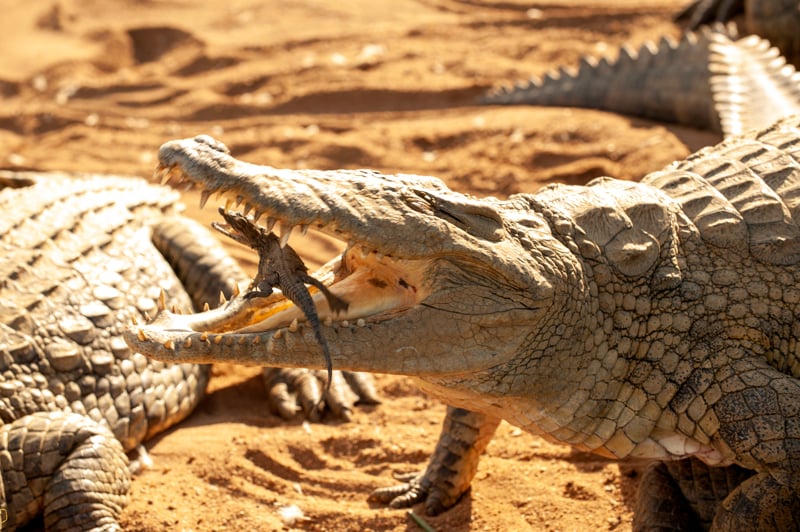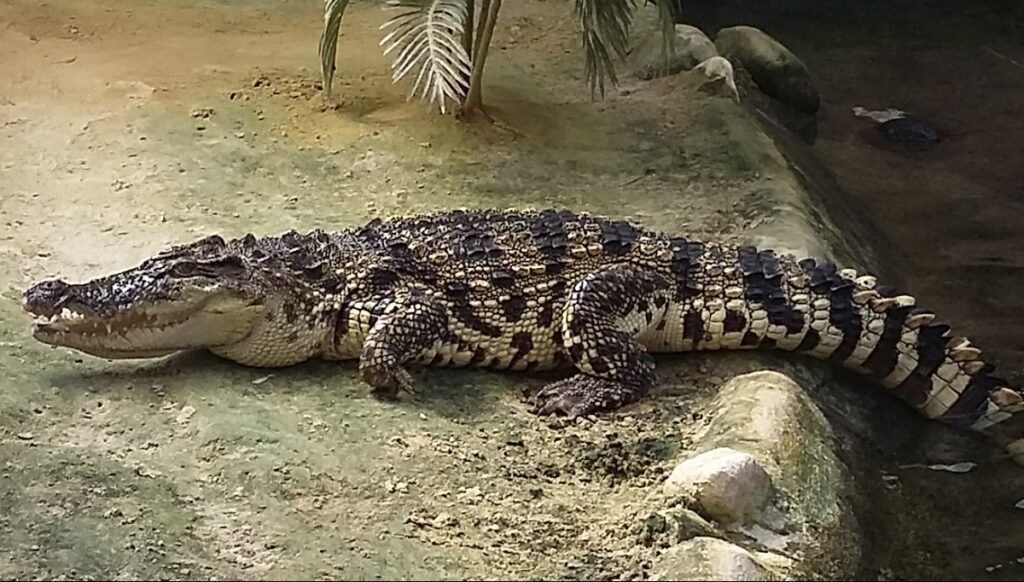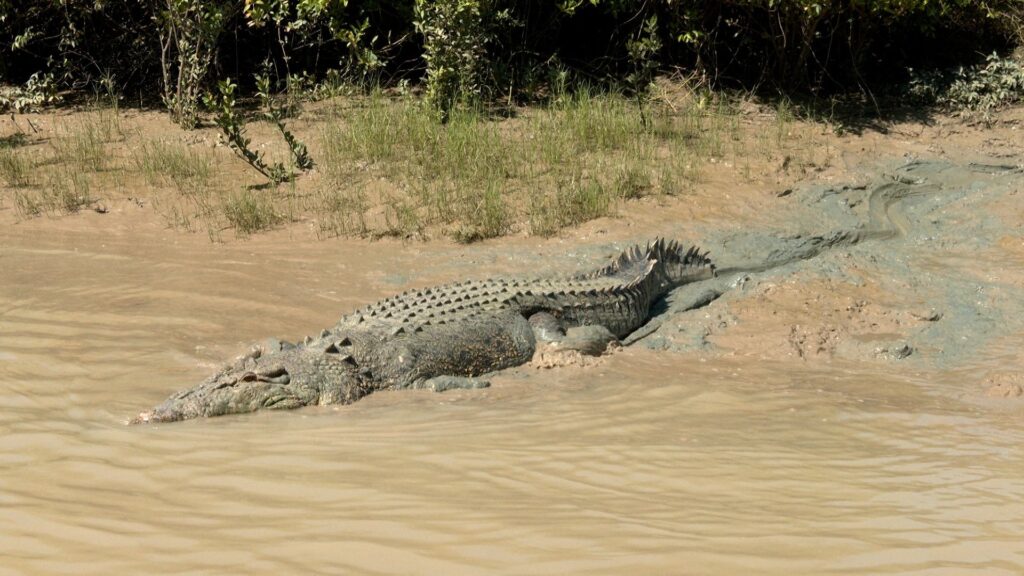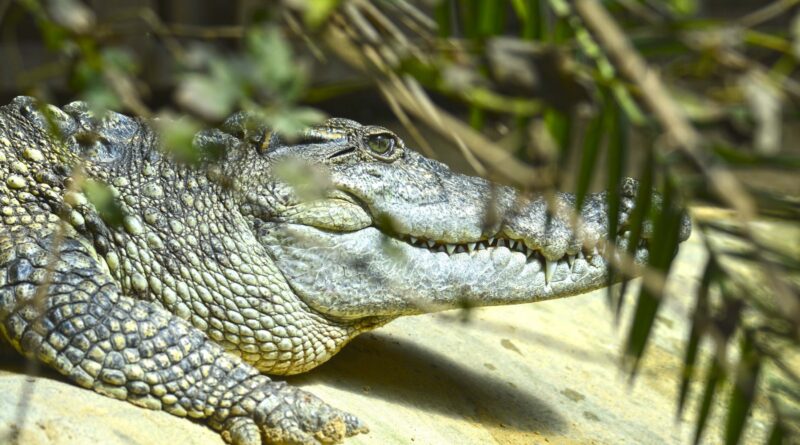Nile Crocodile Conservation Awareness
Nile Crocodile Conservation Awareness Nile crocodiles (Crocodylus niloticus) play a crucial role in maintaining the health of aquatic ecosystems across Africa. As apex predators, they help regulate prey populations, contributing to biodiversity and the balance of their habitats. Unfortunately, Nile crocodiles face numerous threats that have led to declining populations in some areas. This article aims to raise awareness about the importance of conserving Nile crocodiles and to encourage collective action to protect these remarkable creatures.
Understanding Nile Crocodiles
A. Description and Characteristics

Nile crocodiles are large reptiles, with adult males typically measuring between 13 to 16 feet in length. They have a robust body, powerful jaws, and a distinctive snout. Their coloration ranges from olive brown to greenish-gray, providing excellent camouflage in their natural habitats. These crocodiles are primarily carnivorous, feeding on fish, birds, and small mammals.
B. Role in Their Ecosystem
As apex predators, Nile crocodiles play an essential role in their ecosystem. They help control the populations of various species, which in turn affects the entire food web. Additionally, by preying on weaker or sick animals, they contribute to the overall health of the prey population. Their nesting sites also provide habitats for other wildlife, showcasing their importance in maintaining biodiversity.
Here’s a table summarizing key aspects of Nile crocodile conservation awareness, including threats, conservation efforts, and ways individuals can help:
| Category | Details |
|---|---|
| Understanding Nile Crocodiles | Description: Large reptiles, typically 13-16 feet long, olive brown to greenish-gray. Role in Ecosystem: Apex predators, regulate prey populations, maintain biodiversity. |
| Threats to Nile Crocodiles | Habitat Loss: Urbanization, agriculture, climate change. Poaching: Illegal hunting for skin and meat. Human-Wildlife Conflict: Increased encounters leading to killings. Pollution: Contaminated water affecting health and prey availability. |
| Conservation Efforts | Programs: Protected areas and wildlife reserves. Success Stories: Community-led initiatives increasing populations in certain regions. Local Community Role: Involvement fosters ownership and responsibility for conservation. |
| Raising Awareness | Public Education: School programs, community initiatives. Stakeholder Engagement: Collaboration between governments, NGOs, and communities. Digital Campaigns: Utilizing social media to spread awareness. |
| How Individuals Can Help | Support Organizations: Donations and volunteering. Responsible Tourism: Observing crocodiles from a safe distance. Advocacy: Promoting sustainable practices in local communities. Educate Others: Share knowledge about the importance of Nile crocodiles. |
This table provides a concise overview of the essential aspects of Nile crocodile conservation awareness, making it easier to digest the information at a glance. Let me know if you need any modifications or additional details!
Threats to Nile Crocodiles
A. Habitat Loss and Degradation

One of the most significant threats to Nile crocodiles is habitat loss due to urbanization, agriculture, and industrial development. Wetlands and riverbanks are being destroyed to make way for human activities, severely impacting their natural habitats. Climate change also poses a risk, altering water levels and temperatures, further threatening these reptiles’ survival.
B. Poaching and Illegal Trade
Poaching for their skin and meat has led to significant declines in Nile crocodile populations. The illegal wildlife trade continues to be a major concern, as demand for crocodile products persists in various markets worldwide.
C. Human-Wildlife Conflict
As human populations expand, encounters between people and crocodiles have increased. This often leads to conflict, resulting in the killing of crocodiles in response to perceived threats to livestock or human safety.
D. Pollution and Water Quality Issues

Water pollution from agricultural runoff, industrial waste, and plastic debris poses a serious threat to Nile crocodiles. Contaminated water can affect their health, reproductive success, and the availability of prey.
Conservation Efforts
A. Existing Conservation Programs
Several organizations and governments have implemented conservation programs aimed at protecting Nile crocodile populations. Protected areas and wildlife reserves have been established in key habitats, allowing these reptiles to thrive away from human interference.
B. Success Stories and Case Studies
In some regions, targeted conservation efforts have yielded positive results. For instance, in parts of South Africa, community-led initiatives have successfully increased local crocodile populations by promoting sustainable practices and reducing poaching.
C. Role of Local Communities in Conservation
Engaging local communities is crucial for the success of conservation efforts. By involving residents in protecting crocodiles and their habitats, these initiatives can foster a sense of ownership and responsibility toward wildlife conservation.
Raising Awareness
A. Importance of Public Education

Educating the public about the importance of Nile crocodiles is vital for their conservation. Schools and community programs can play a significant role in raising awareness, fostering a new generation of conservationists.
B. Engaging Stakeholders
Effective conservation requires collaboration among various stakeholders, including governments, NGOs, and local communities. Advocacy for stronger wildlife protection laws and funding for conservation initiatives is essential.
C. Social Media and Digital Campaigns
The rise of social media provides an excellent platform for raising awareness about Nile crocodile conservation. Campaigns that highlight the significance of these reptiles can reach a broad audience, encouraging public support and involvement.
How Individuals Can Help
A. Supporting Conservation Organizations
Individuals can contribute to Nile crocodile conservation by supporting organizations dedicated to protecting these reptiles. Donations, volunteering, or participating in awareness campaigns can make a difference.
B. Responsible Tourism and Wildlife Viewing
Engaging in responsible tourism practices allows people to appreciate Nile crocodiles in their natural habitats without causing harm. Observing crocodiles from a safe distance can raise awareness while ensuring their protection.
C. Advocacy for Sustainable Practices

Advocating for sustainable practices in agriculture, waste management, and water use can help mitigate the threats faced by Nile crocodiles. Encouraging local businesses and governments to adopt eco-friendly policies is vital for long-term conservation efforts.
D. Educating Others About Nile Crocodiles
Sharing knowledge about the importance of Nile crocodiles with friends and family can help spread awareness. Education is a powerful tool that can drive change and foster a culture of conservation.
Conclusion
The conservation of Nile crocodiles is vital for maintaining the balance of their ecosystems. As we face increasing threats from habitat loss, poaching, and climate change, raising awareness and taking action is more critical than ever. By engaging communities, supporting conservation efforts, and educating others, we can work together to ensure a future where Nile crocodiles thrive in their natural habitats. Let us take action today to protect these magnificent creatures for generations to come.
References
- IUCN Red List of Threatened Species
- CITES (Convention on International Trade in Endangered Species)
- World Wildlife Fund (WWF) Nile Crocodile Conservation Initiatives
- Local wildlife conservation organizations and research studies on Nile crocodile populations
Tips for Nile Crocodile Conservation Awareness
Educate Yourself and Others
- Read books, articles, and research papers about Nile crocodiles and their role in the ecosystem.
- Share interesting facts and information with friends, family, and social media followers to promote awareness.
Support Local Conservation Organizations
- Donate to or volunteer with organizations focused on crocodile conservation or wildlife protection in your area.
- Attend local events or fundraisers to help raise money for conservation projects.
Advocate for Sustainable Practices
- Encourage sustainable land use and pollution reduction in your community to protect crocodile habitats.
- Support businesses that follow eco-friendly practices and promote conservation initiatives.
Practice Responsible Tourism
- When visiting areas where Nile crocodiles are present, respect wildlife viewing guidelines. Keep a safe distance and avoid disturbing their natural behavior.
- Choose eco-tourism options that prioritize wildlife conservation and support local communities.
Engage in Community Awareness Programs
- Participate in or organize workshops, talks, or community events that focus on the importance of crocodile conservation.
- Collaborate with schools to create educational programs about Nile crocodiles for students.
Use Social Media for Advocacy
- Share posts, images, and videos highlighting the significance of Nile crocodiles and the challenges they face.
- Create or join online campaigns to raise awareness about crocodile conservation efforts.
Report Illegal Activities
- If you witness poaching, illegal hunting, or habitat destruction, report it to the relevant authorities or wildlife protection organizations.
- Encourage others to be vigilant and proactive in protecting wildlife.
Participate in Citizen Science Projects
- Get involved in citizen science initiatives that track Nile crocodile populations or monitor their habitats.
- Help collect data and report findings to contribute to conservation research efforts.
Promote Clean Water Practices
- Advocate for clean water initiatives in your community to reduce pollution in rivers and wetlands that are home to Nile crocodiles.
- Educate others about the impact of plastic and chemical waste on aquatic ecosystems.
Foster a Connection with Nature
- Spend time in natural habitats where Nile crocodiles live, such as wetlands or rivers, to develop a personal connection with wildlife.
- Encourage others to appreciate and respect wildlife through nature walks, photography, or volunteer opportunities.
Here are some frequently asked questions (FAQs) about Nile crocodile conservation, along with their answers:
FAQs on Nile Crocodile Conservation
Why are Nile crocodiles important to their ecosystem?
Nile crocodiles play a critical role as apex predators, helping to regulate prey populations and maintain the balance of aquatic ecosystems. Their presence contributes to biodiversity, as they influence the dynamics of the food web.
What are the main threats to Nile crocodiles?
The primary threats include habitat loss due to urbanization and agriculture, poaching for their skin and meat, human-wildlife conflict, and pollution affecting their habitats and health.
How can I help with Nile crocodile conservation?
You can support conservation by donating to relevant organizations, practicing responsible tourism, advocating for sustainable practices, participating in community awareness programs, and sharing information about Nile crocodiles with others.
Are Nile crocodiles endangered?
While Nile crocodiles are not classified as endangered overall, certain populations are threatened due to habitat loss and poaching. Their conservation status varies by region, so local assessments are essential.
What can I do if I encounter a Nile crocodile in the wild?
If you encounter a Nile crocodile, maintain a safe distance and do not approach or provoke it. Observe quietly from afar, and avoid swimming or engaging in activities that could disturb them.
How does climate change affect Nile crocodiles?
Climate change impacts Nile crocodiles through altered water levels, temperatures, and habitat availability. These changes can affect breeding, feeding, and overall health, leading to population declines.
Can crocodiles coexist with humans?
Yes, with proper management and understanding, Nile crocodiles can coexist with humans. Community engagement and education can reduce human-wildlife conflict and promote conservation efforts.
What is being done to conserve Nile crocodiles?
Various organizations and governments have established protected areas, conducted research, and implemented community-led initiatives to promote Nile crocodile conservation and habitat protection.
How can schools get involved in crocodile conservation?
Schools can integrate wildlife education into their curriculum, organize field trips to natural habitats, host guest speakers from conservation organizations, and engage students in community service projects related to wildlife protection.
Are there any specific laws protecting Nile crocodiles?
Yes, many countries have laws and regulations in place to protect Nile crocodiles from poaching and habitat destruction. Additionally, international agreements like CITES (Convention on International Trade in Endangered Species) regulate the trade of crocodile products.
